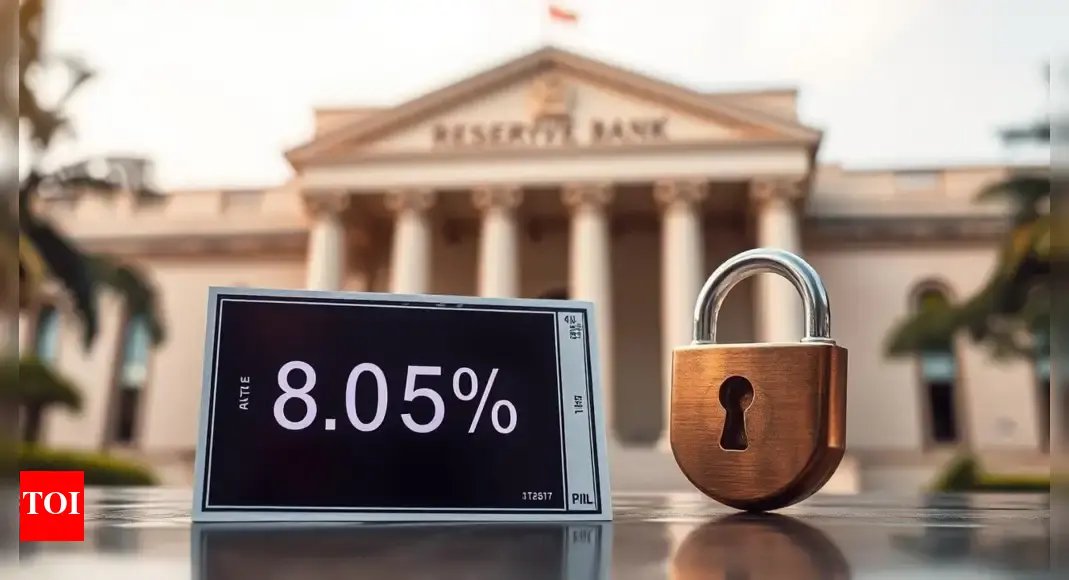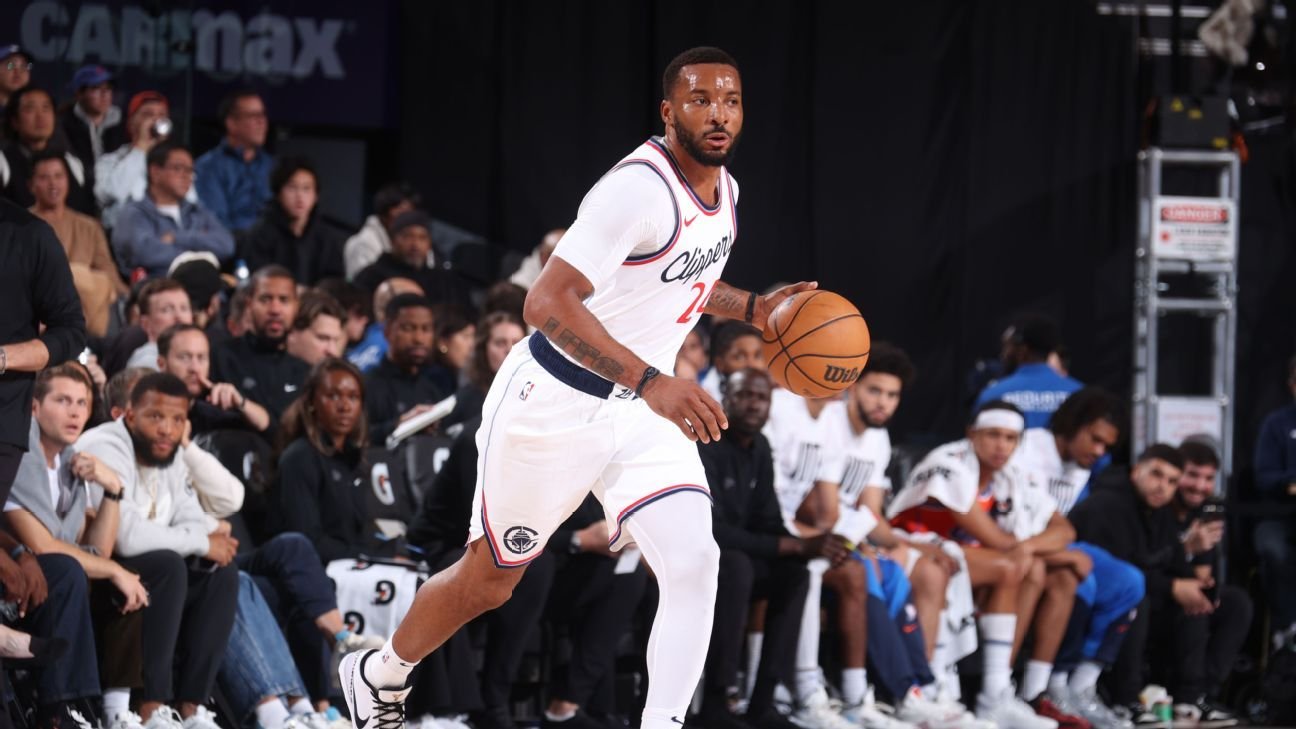The Reserve Bank of India has maintained the interest rate on its Floating Rate Savings Bonds (FRSBs) at 8.05% for the July–December 2025 period, offering one of the highest government-backed returns currently available in the fixed-income market.While this rate remains unchanged from the January–June 2025 period, it places FRSBs well ahead of most bank fixed deposits (FDs) and small savings schemes, including the Public Provident Fund (PPF) and National Savings Certificate (NSC), in terms of returns, making it an attractive option for long-term conservative investors, according to an ET analysis.RBI floating rate bond outperforms most bank FDsAccording to data from Paisabazaar quoted by ET, the RBI bond’s 8.05% yield is higher than the long-term FD interest rates offered by major banks. Axis Bank, HDFC Bank, and ICICI Bank are offering 6.4–6.6% interest on 5–10 year FDs, while the State Bank of India (SBI) is paying just 6.05% for the same tenure. Even banks like Punjab National Bank and Kotak Mahindra cap their long-term FD rates at 6.5% and 6.25% respectively.A handful of small finance banks (SFBs) are offering slightly better returns. Jana Small Finance Bank tops the list at 8.2%, followed by slice SFB at 7.75% and Suryoday SFB at 8%. However, even the best of these still fall short of matching the sovereign guarantee that backs the RBI’s floating rate bonds, which enjoy complete government protection with no investment cap.Safety plus rate advantage“Given that the bonds are issued by the RBI, they provide the highest safety to investors, more than any fixed deposit available in the market,” said Suresh Darak, Founder, Bondbazaar. “Moreover, at 8.05%, the returns are higher than bank FDs, which are currently at around 7%. Since the rates are recalibrated every six months, investors could benefit further if the interest rate cycle turns upward,” he added.However, investors need to be comfortable with the longer lock-in period of 7 years for individuals below 60. Compared to the 5-year lock-in for the SCSS or the 15-year tenure of PPF, the RBI bond’s lock-in appears moderate. The bond does offer early exit options for senior citizens but with tiered holding conditions: those aged 60–70 can exit after 6 years, 70–80 after 5 years, and those above 80 after 4 years.Rate linked to NSC, recalibrated every 6 monthsThe 8.05% return on the RBI bond is pegged 35 basis points above the prevailing NSC rate, which currently stands at 7.7% for the July–September quarter. The next reset for the RBI bond will occur on January 1, 2026. The interest is paid out twice a year — on January 1 and July 1 — providing a steady income stream.This linkage also offers some protection in case small savings rates are reduced. For instance, if the NSC rate were to drop to 7.2% in the next quarter, the bond would still yield 7.55%, keeping it ahead of most long-term FD and PPF rates.Outperformance even during low-rate cycleData from India Post shows that from April 2020 to December 2022, the NSC interest rate stood at a historic low of 6.8%. Despite this, RBI’s FRSBs yielded 7.15% during that time — still significantly higher than bank FD rates, which were mostly between 5–5.5%.“With a low entry requirement of just Rs 1,000 and no maximum limit, these bonds are accessible to a broad range of savers,” said Vineet Agrawal, Co-founder of bond investment platform Jiraaf. “Backed by a sovereign guarantee, these 7-year bonds pay interest every January 1 and July 1, making them ideal for conservative investors seeking steady income. These bonds clearly outperform typical bank FDs and offer more stability amid uncertain rate cycles,” he added.Better than PPF and SCSS for high-value saversThe RBI bond’s edge becomes clearer when compared with other small savings schemes. The PPF offers 7.1% interest but comes with a 15-year lock-in and a maximum annual contribution of Rs 1.5 lakh. The SCSS offers 8.2% interest with a 5-year lock-in but restricts investment to Rs 30 lakh per person.Senior citizens who have exhausted their SCSS limit can use RBI bonds to extend high-yielding exposure. Since there’s no cap on investment in FRSBs, they serve as an effective second-tier retirement investment instrument. Interest payouts every six months make them even more suitable for retirees who want periodic income without market volatility.Rate risk remains low for nowWhile there is some concern that the RBI’s 100 basis point repo rate cut this year may eventually push small savings rates lower, market watchers believe any reduction in NSC rates is likely to be gradual.Small savings schemes are politically sensitive and widely subscribed. As such, the government is unlikely to mirror repo rate cuts fully in small savings adjustments. Even if it does, the semi-annual recalibration of RBI bonds provides a cushion — any change would only be reflected after six months.(Disclaimer: The opinions, analyses and recommendations expressed herein are those of brokerage and do not reflect the views of The Times of India. Always consult with a qualified investment advisor or financial planner before making any investment decisions.)
var _mfq = window._mfq || [];
_mfq.push([“setVariable”, “toi_titan”, window.location.href]);
!(function(f, b, e, v, n, t, s) {
function loadFBEvents(isFBCampaignActive) {
if (!isFBCampaignActive) {
return;
}
(function(f, b, e, v, n, t, s) {
if (f.fbq) return;
n = f.fbq = function() {
n.callMethod ? n.callMethod(…arguments) : n.queue.push(arguments);
};
if (!f._fbq) f._fbq = n;
n.push = n;
n.loaded = !0;
n.version = ‘2.0’;
n.queue = [];
t = b.createElement(e);
t.async = !0;
t.defer = !0;
t.src = v;
s = b.getElementsByTagName(e)[0];
s.parentNode.insertBefore(t, s);
})(f, b, e, ‘https://connect.facebook.net/en_US/fbevents.js’, n, t, s);
fbq(‘init’, ‘593671331875494’);
fbq(‘track’, ‘PageView’);
};
function loadGtagEvents(isGoogleCampaignActive) {
if (!isGoogleCampaignActive) {
return;
}
var id = document.getElementById(‘toi-plus-google-campaign’);
if (id) {
return;
}
(function(f, b, e, v, n, t, s) {
t = b.createElement(e);
t.async = !0;
t.defer = !0;
t.src = v;
t.id = ‘toi-plus-google-campaign’;
s = b.getElementsByTagName(e)[0];
s.parentNode.insertBefore(t, s);
})(f, b, e, ‘https://www.googletagmanager.com/gtag/js?id=AW-877820074’, n, t, s);
};
function loadSurvicateJs(allowedSurvicateSections = []){
const section = window.location.pathname.split(‘/’)[1]
const isHomePageAllowed = window.location.pathname === ‘/’ && allowedSurvicateSections.includes(‘homepage’)
const ifAllowedOnAllPages = allowedSurvicateSections && allowedSurvicateSections.includes(‘all’);
if(allowedSurvicateSections.includes(section) || isHomePageAllowed || ifAllowedOnAllPages){
(function(w) {
function setAttributes() {
var prime_user_status = window.isPrime ? ‘paid’ : ‘free’ ;
var geoLocation = window?.geoinfo?.CountryCode ? window?.geoinfo?.CountryCode : ‘IN’ ;
w._sva.setVisitorTraits({
toi_user_subscription_status : prime_user_status,
toi_user_geolocation : geoLocation
});
}
if (w._sva && w._sva.setVisitorTraits) {
setAttributes();
} else {
w.addEventListener(“SurvicateReady”, setAttributes);
}
var s = document.createElement(‘script’);
s.src=”https://survey.survicate.com/workspaces/0be6ae9845d14a7c8ff08a7a00bd9b21/web_surveys.js”;
s.async = true;
var e = document.getElementsByTagName(‘script’)[0];
e.parentNode.insertBefore(s, e);
})(window);
}
}
window.TimesApps = window.TimesApps || {};
var TimesApps = window.TimesApps;
TimesApps.toiPlusEvents = function(config) {
var isConfigAvailable = “toiplus_site_settings” in f && “isFBCampaignActive” in f.toiplus_site_settings && “isGoogleCampaignActive” in f.toiplus_site_settings;
var isPrimeUser = window.isPrime;
var isPrimeUserLayout = window.isPrimeUserLayout;
if (isConfigAvailable && !isPrimeUser) {
loadGtagEvents(f.toiplus_site_settings.isGoogleCampaignActive);
loadFBEvents(f.toiplus_site_settings.isFBCampaignActive);
loadSurvicateJs(f.toiplus_site_settings.allowedSurvicateSections);
} else {
var JarvisUrl=”https://jarvis.indiatimes.com/v1/feeds/toi_plus/site_settings/643526e21443833f0c454615?db_env=published”;
window.getFromClient(JarvisUrl, function(config){
if (config) {
const allowedSectionSuricate = (isPrimeUserLayout) ? config?.allowedSurvicatePrimeSections : config?.allowedSurvicateSections
loadGtagEvents(config?.isGoogleCampaignActive);
loadFBEvents(config?.isFBCampaignActive);
loadSurvicateJs(allowedSectionSuricate);
}
})
}
};
})(
window,
document,
‘script’,
);
#RBI #floating #rate #bond #offers #return #FRSB #outperforms #bank #FDs #PPF #conservative #investors



